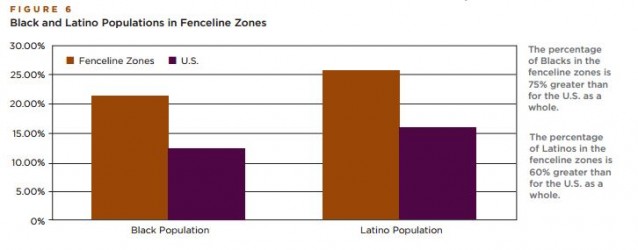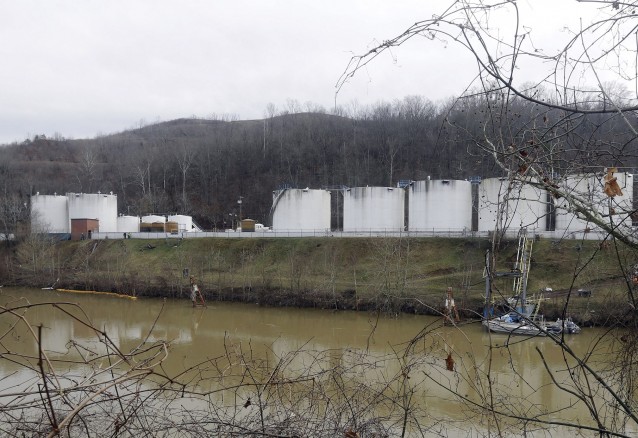Climate Progress, May 2, 2014
The Freedom Industries site in West Virginia, which released 10,000 gallons of chemicals into a drinking water supply, is seen in this Jan. 13, 2014, photo.
CREDIT: AP Photo/Steve Helber
The people who face the greatest threat from potential toxic chemical disasters are disproportionately low-income, black, or Latino, according to a study released Thursday by three environmental groups.
Compared to the national average, the 134 million people who live closest to U.S. chemical facilities are 75 percent more likely to be black, 60 percent more likely to be Latino, and 50 percent more likely to be poor, the study showed. The demographics of these areas — called “fenceline zones” — show a troubling “pattern of ‘environmental racism,’” among chemical and petroleum companies, the report said.
“The question now is: what will it take for government and industry to finally act to prevent disasters, and protect the communities and workers whose safety and security are unfairly and unequally put in jeopardy?” the report, said. It was written by the Environmental Justice and Health Alliance for Chemical Policy Reform, Coming Clean, and the Center for Effective Government.

CREDIT: ComingClean.org
It has long been known how vulnerable a good portion of the U.S. population is to chemical disasters, whether they be from manufacturers, wastewater treatment plants, or oil refineries. Indeed, there are approximately 12,440 chemical facilities across the country that are surrounded by more than 100 million people. Of those facilities, 473 of them surround populations of 100,000 people or more.
This research, however, for the first time compiles the demographic characteristics of those people living with the largest daily risk. The “fenceline zones” surveyed by the groups are not just those in the general vicinity chemical facilities, but the areas within those vicinities that are at highest risk for death or injury after a potential chemical accident occurs.
The report recommended that government and industry step up their game to begin updating chemical safety regulations that have stalled for decades, including updating the Toxic Substances Control Act, which currently allows 62,000 chemicals to be stored with no requirement that they be tested or shown to be safe. That law has not been updated in the 38 years that it has been in existence.
In addition to stronger regulations, the study called for companies to determine whether safer alternatives can be used instead of hazardous chemicals, and use those safer chemicals when they are “available, effective, and affordable.”
“Simple changes could protect millions of Americans, reduce costs and liabilities for companies, and modernize chemical facilities and regulations,” the report said.
Getting chemical companies to change their ways, however, has proven to be difficult over the years, in no small part due to rigorous lobbying efforts from the chemical industry. From 2005 through part of 2012, the chemical industry gave $39 million to candidates for federal office and spent $333 million on lobbying at the federal level, according to a Common Cause report. That money almost always goes to Republicans, as OpenSecrets notes, with Republicans receiving nearly three-quarters of the money contributed by the industry in the last 20 years.



NJEJA Letter Archive on the EJ Law Rules